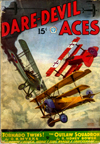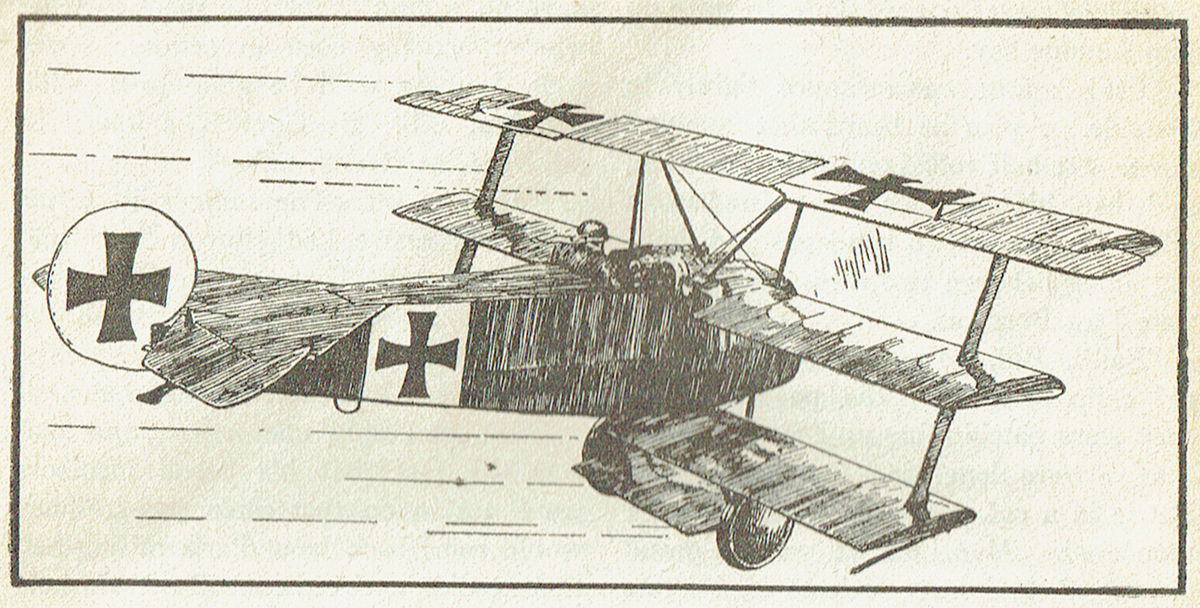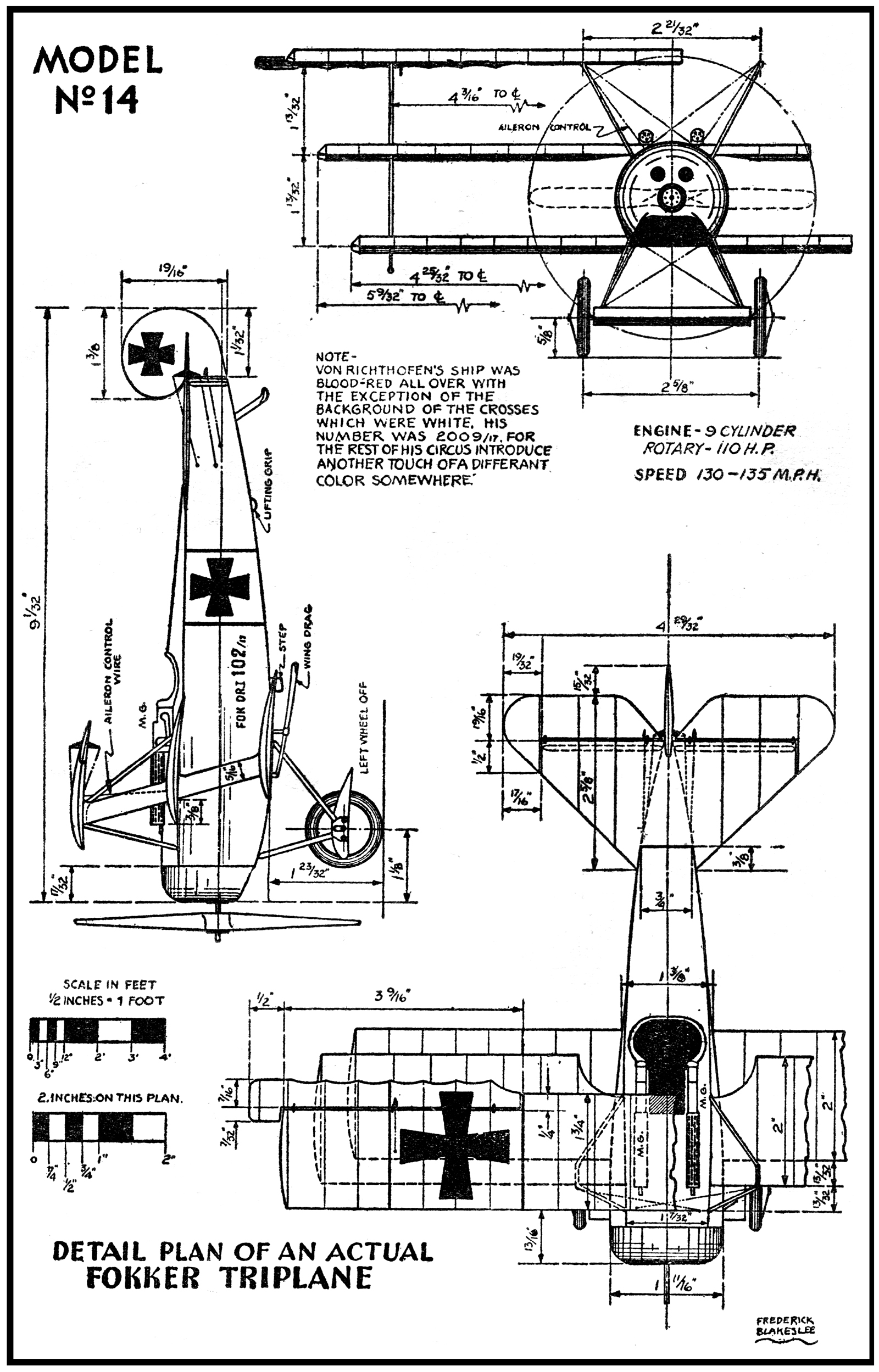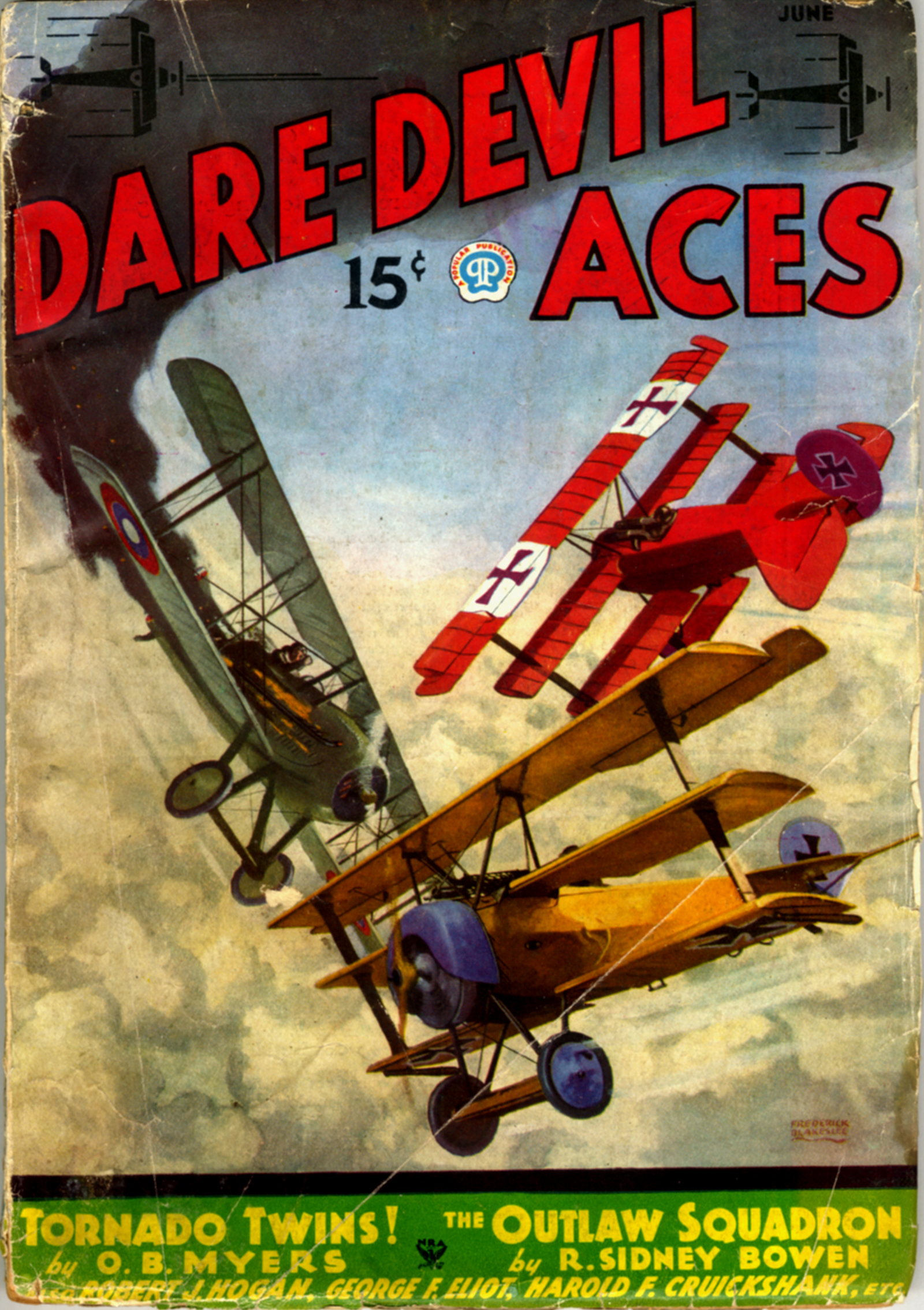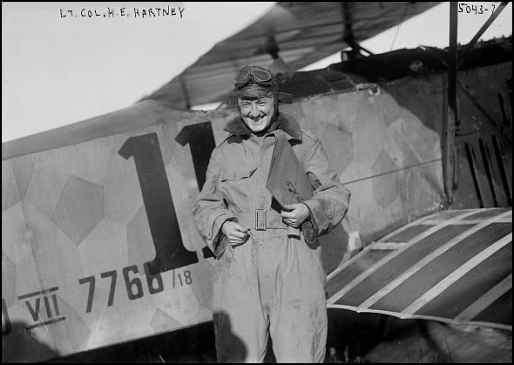THIS May we are once again celebrating the genius that is C.B. Mayshark! Mayshark took over the covers duties on Flying Aces from Paul Bissell with the December 1934 issue and would continue to provide covers for the next year and a half until the June 1936 issue. While Bissell’s covers were frequently depictions of great moments in combat aviation from the Great War, Mayshark’s covers were often depictions of future aviation battles and planes—like the June 1935 cover where Mayshark gives us a glimpse into a raid on the Panama Canal!
Raid on the Panama Canal
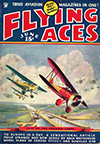 DEATH and destruction in the Canal Zone! Great masses of concrete and steel scattered to the four winds as if they were paper boxes! Ships and men reduced to fragments with equal abandon! A monument to human progress that took years to construct, a shipping and transportation facility which is absolutely essential to modern needs—all wrecked within the space of a few minutes!
DEATH and destruction in the Canal Zone! Great masses of concrete and steel scattered to the four winds as if they were paper boxes! Ships and men reduced to fragments with equal abandon! A monument to human progress that took years to construct, a shipping and transportation facility which is absolutely essential to modern needs—all wrecked within the space of a few minutes!
Could it be done? Well, it could be attempted, at any rate. Success would depend upon the precision and the deftness with which the whole maneuver was carried out. Failure would be certain only if the United States air defense arm was of sufficient strength.
The prime reason for such an attack would be, of course, the move to cut off the two main fleets of the United States Navy. If the Atlantic Fleet were in home waters, it would take weeks to concentrate both fleets in the Pacific in case of an emergency. The reverse would be the case, should the national first line of defense be required in the Atlantic.
The Panama Canal is presumed to be international property under certain nautical laws, but it is primarily United States property. After all, it was built by this country, and the problem of defending it lies in the hands of the country that built it.
As is well known, the defensive measures adopted by the United States consists mainly of heavy naval batteries at strategic points. Some of these batteries are hidden, and some mounted on points of material advantage. There are also many troops stationed there—troops well versed in garrison artillery work—who are on duty twenty-four hours a day.
Shipping is carefully watched, and all vessels using the canal are under thorough observation at all times. One of the great dangers is the possibility of an enemy power’s sending through the locks a gigantic floating torpedo in the form of a ship loaded with explosive, which is blown up by means of a time bomb, once the vessel is within the lock walls. Such an explosion would destroy the work of years in a few seconds, and it would take even more time to replace it.
This may sound sensational and melodramatic to conservative readers, but it is not beyond the realm of possibility. Far stranger heroics have been displayed in the heat of war, particularly where national reverence and strange religious fanaticisms are exploited.
But while this method may be the most effective in the long run, there are many reasons why it could not be carried out with any assurance of secrecy. Too many people have to be considered where the crew of a vessel is concerned, and the loading of sufficient explosive necessary to do the job thoroughly presents too many opportunities for leakage of information.
The problem of gathering a crew willing to take this risk is, of course, the most outstanding. Only men fired with deep national pride can be imagined in such an heroic role.
How, then, can the Panama Canal be destroyed, or at least shut off?
The possibility of hostile landing parties who would make a night attack from surface craft is out of the picture when one considers the ground defenses already there. No landing party carrying sufficient demolition equipment could get through the first line, and have enough men left alive to carry out the plan.
Another possibility is the prospect of long-range shelling from naval craft. While the true facts of the Panama defenses are not known to the general public, it is very likely, however, that the guns mounted at Panama can far outrange the 16-inchers of an enemy dreadnaught. They would have a steadier fire platform and, by a system of prearranged charts, could get their ranges set and salvos blanketed over any area long before any enemy battery could score a hit.
The only prospect offering any promise of success is the new air arm involving high-speed bombing planes carrying the proper projectiles. Mere bombs will not do in a case like this. They must be shells with special high tensile nose caps and delayed action fuses. Otherwise, they would simply drop on the surfaces and do nothing but superficial damage. The concrete and steel at Panama calls for special bombs and special explosives.
In all this, we are considering the attack of an enemy power from the Pacific side, but it could be staged from either end of the canal. We must accept the fact that Japan is unusually strong in first-line submarines which have unusual range of action and carry folding-wing planes in their water-tight hatches. There is also the possibility of an air attack being staged from the flight deck of an aircraft carrier or from the discharge catapults of the cruisers. It is for this reason that we show a Japan«se Navy Nakajima shipboard fighter carrying out such a raid.
This machine is one of the finest shipboard fighters in any naval service. It is an all-metal, single-bay biplane, powered with a Japanese-built British Bristol Jupiter radial engine of 450 h.p. It has a top speed of 192 m.p.h., is fitted for day and night work, and can he used for light bombing.
This is an important feature of the bombs. They must he small, light and yet have the penetrating power of larger projectiles. It is known now that Japan has made recent purchases of several new metal formulas which combine unusual lightness with tensile strength. It is no secret, either, that the Japanese have long been experimenting with new explosives designed for special demolition work.
So here we have the sudden attack, by day or night, from the air. The raiders take off and, instead of attacking in formation, they attempt to cross up the defenders and “scramble†their microphone detectors, by appearing over the canal singly, three or four minutes apart. One or two will stand by to take care of defending ships, and the raid is on.
The defense ships, presumably brought into action from one of the near-by air bases, are Curtiss P-6-E Hawks, a standard pursuit fighter of the Air Service. This ship is a good old stand-by—rough, tough and nasty in a scrap. It is armed with the new high-speed Browning gun and can throw a thousand rounds a minute from each muzzle. It has a top speed of 198, with the 675 Curtiss “Conqueror†Prestone-cooled engine.
The point involved now—and one that could be decided only if such an occasion should arise, is whether the 192-m.p.h. Nakajima, with its pilot harried with the orders to drop bombs on particular and important points of the Canal, could withstand the defensive tactics and heavy gun-power of the Curtiss Hawk. It may be the old story of the attacker always suffering the heaviest losses, even though he gains his objective. Who can tell? Perhaps the question will never have to be settled.

Flying Aces, June 1935 by C.B. Mayshark
Raid on the Panama Canal: Thrilling Story Behind This Month’s Cover
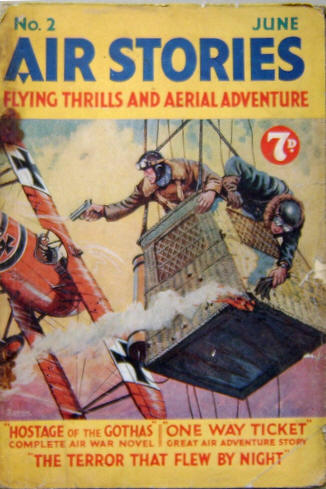 the Christmas Season with The Coffin Crew! Yes, Arch Whitehouse’s hell-raising Handley Page bomber crew! Piloting the bus is the mad Englishman, Lieutenant Graham Townsend, with the equally mad Canadian Lieutenant Phil Armitage serving as reserve pilot and bombing officer with Private Andy McGregor, still wearing his Black Watch kilts, rounding out the front end crew in the forward gun turret. And don’t forget the silent fighting Irishman Sergeant Michael Ryan, usually dragging on his short clay pipe while working over the toggle board dropping the bombs with Alfred Tate and crazy Australian Andy Marks or Horsey Horlick manning the rear gun turret.
the Christmas Season with The Coffin Crew! Yes, Arch Whitehouse’s hell-raising Handley Page bomber crew! Piloting the bus is the mad Englishman, Lieutenant Graham Townsend, with the equally mad Canadian Lieutenant Phil Armitage serving as reserve pilot and bombing officer with Private Andy McGregor, still wearing his Black Watch kilts, rounding out the front end crew in the forward gun turret. And don’t forget the silent fighting Irishman Sergeant Michael Ryan, usually dragging on his short clay pipe while working over the toggle board dropping the bombs with Alfred Tate and crazy Australian Andy Marks or Horsey Horlick manning the rear gun turret.






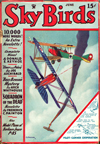
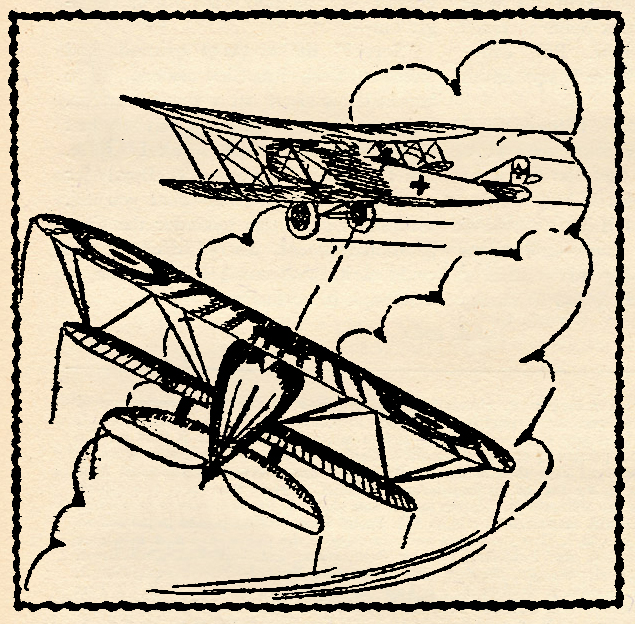
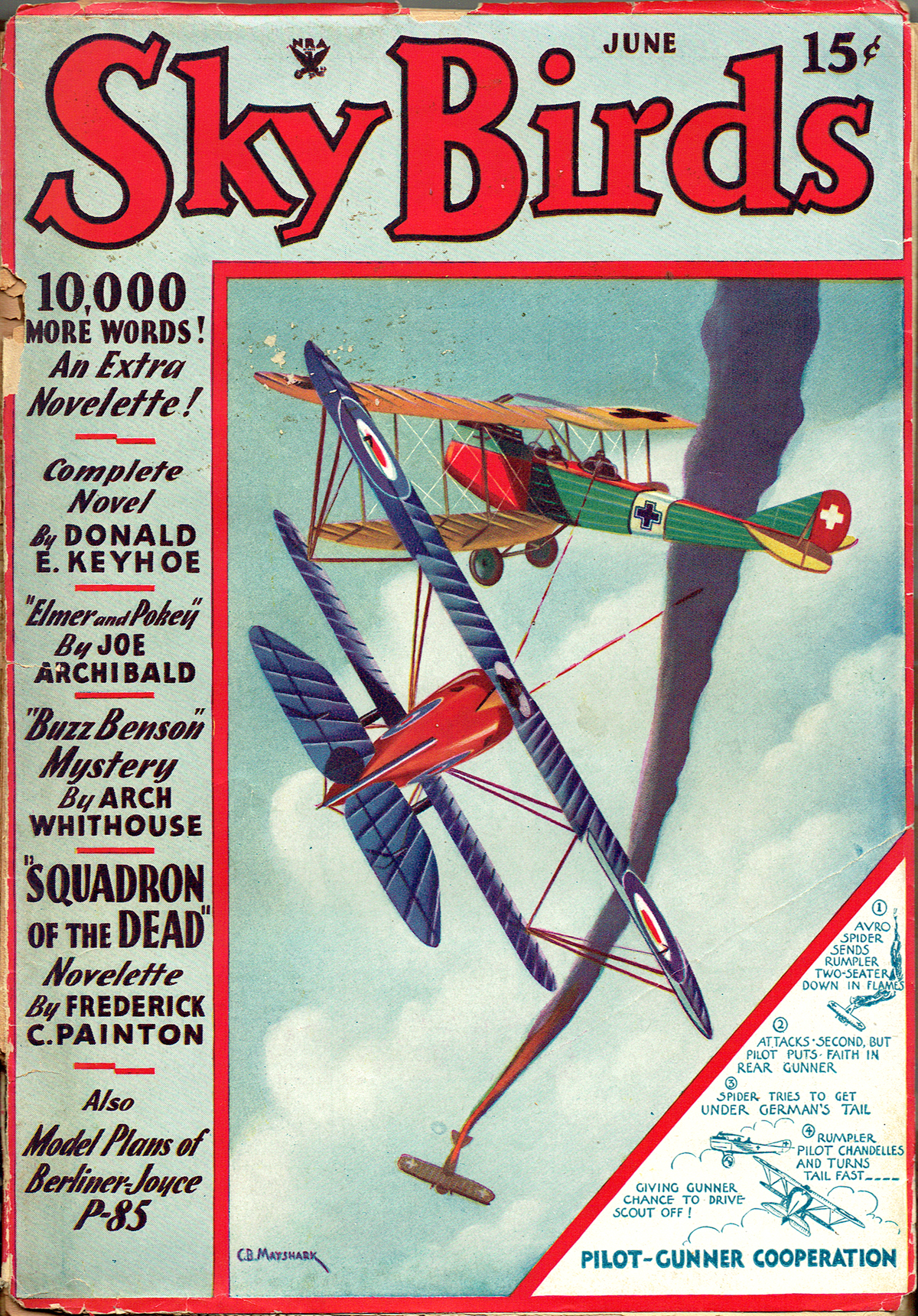
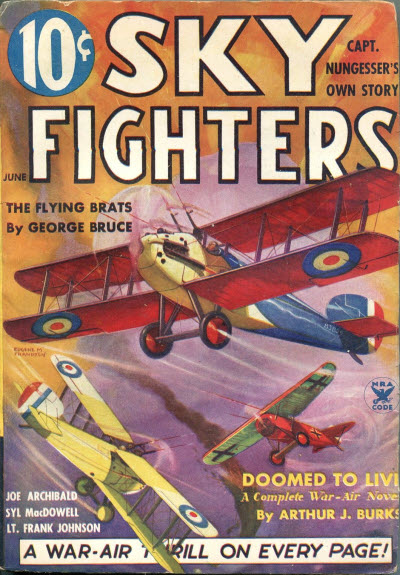 Silent Orth had made an enviable record, in the face of one of the worst beginnings—a beginning which had been so filled with boasting that his wingmates hadn’t been able to stand it. But Orth hadn’t thought of all his talk as boasting, because he had invariably made good on it. However, someone had brought home to him the fact that brave, efficient men were usually modest and really silent, and he had shut his mouth like a trap from that moment on.
Silent Orth had made an enviable record, in the face of one of the worst beginnings—a beginning which had been so filled with boasting that his wingmates hadn’t been able to stand it. But Orth hadn’t thought of all his talk as boasting, because he had invariably made good on it. However, someone had brought home to him the fact that brave, efficient men were usually modest and really silent, and he had shut his mouth like a trap from that moment on.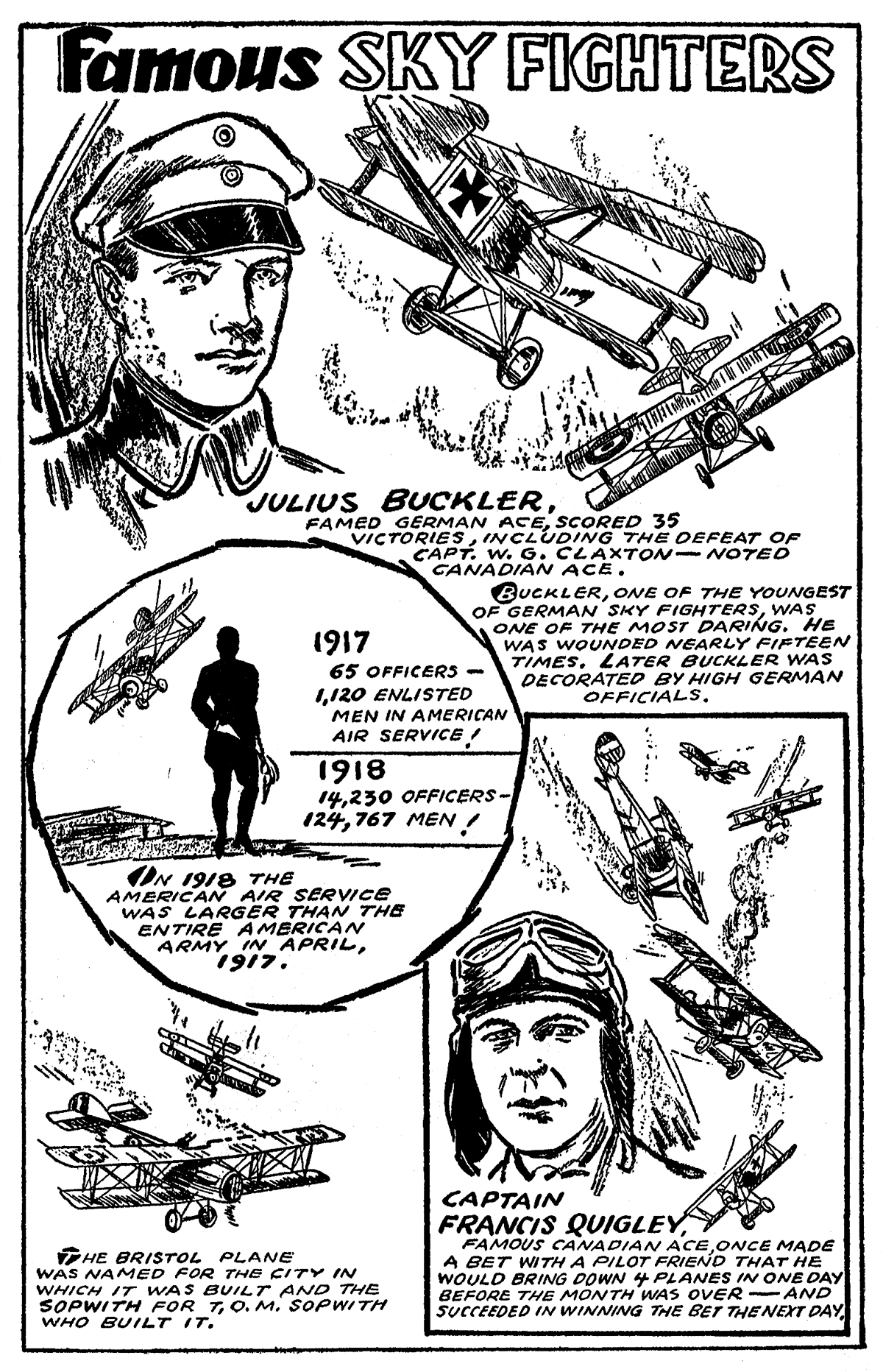
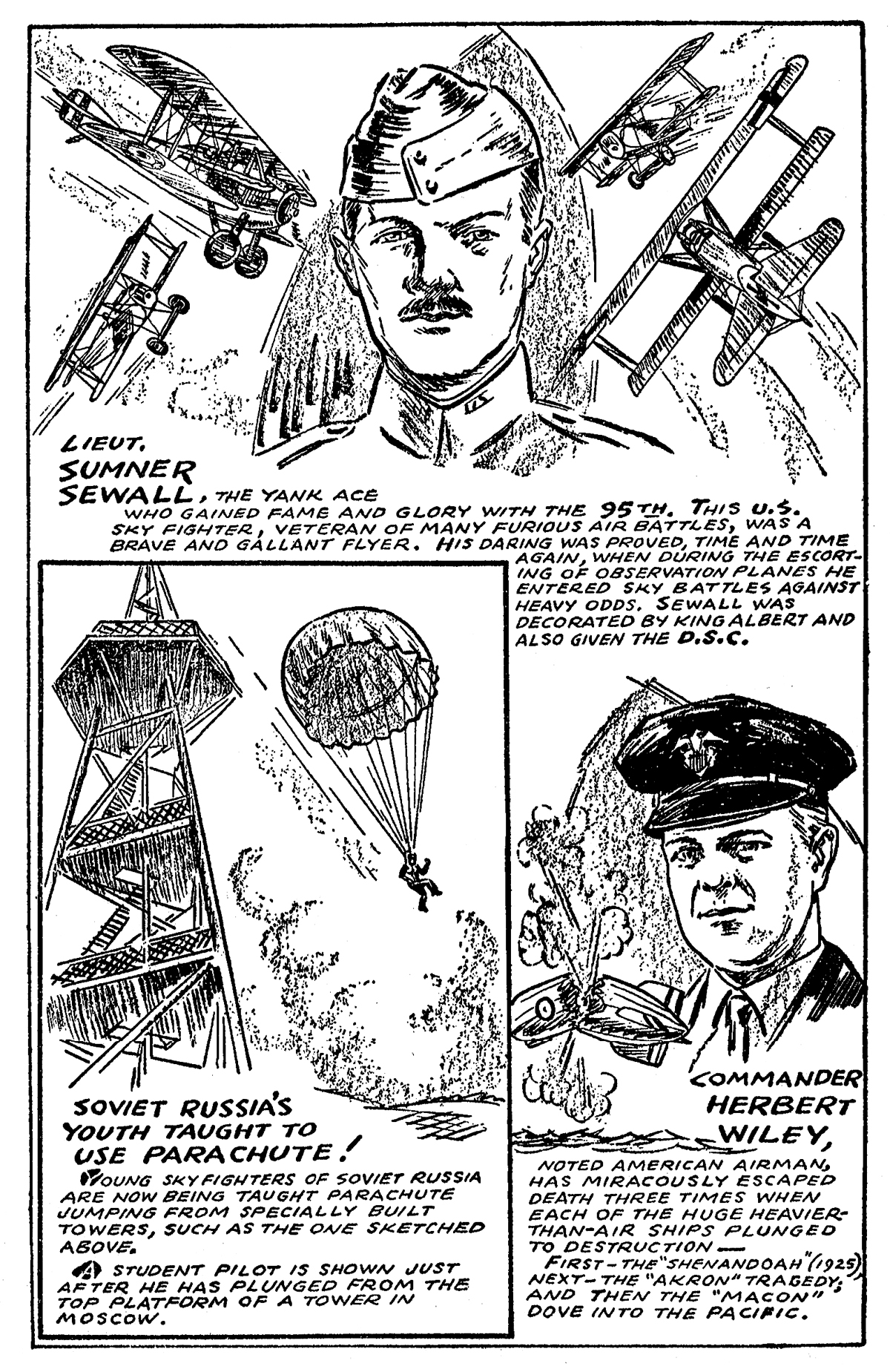
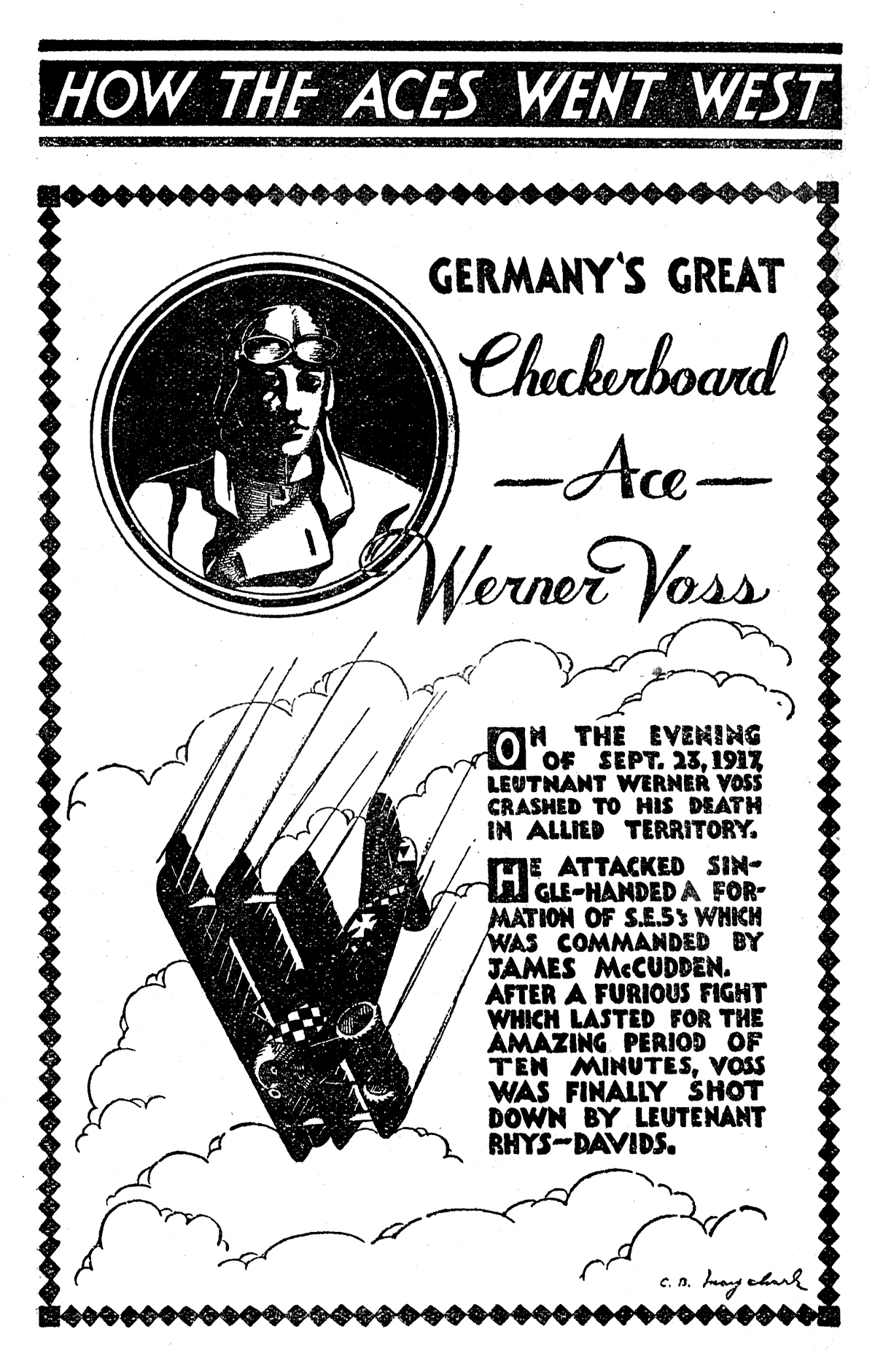
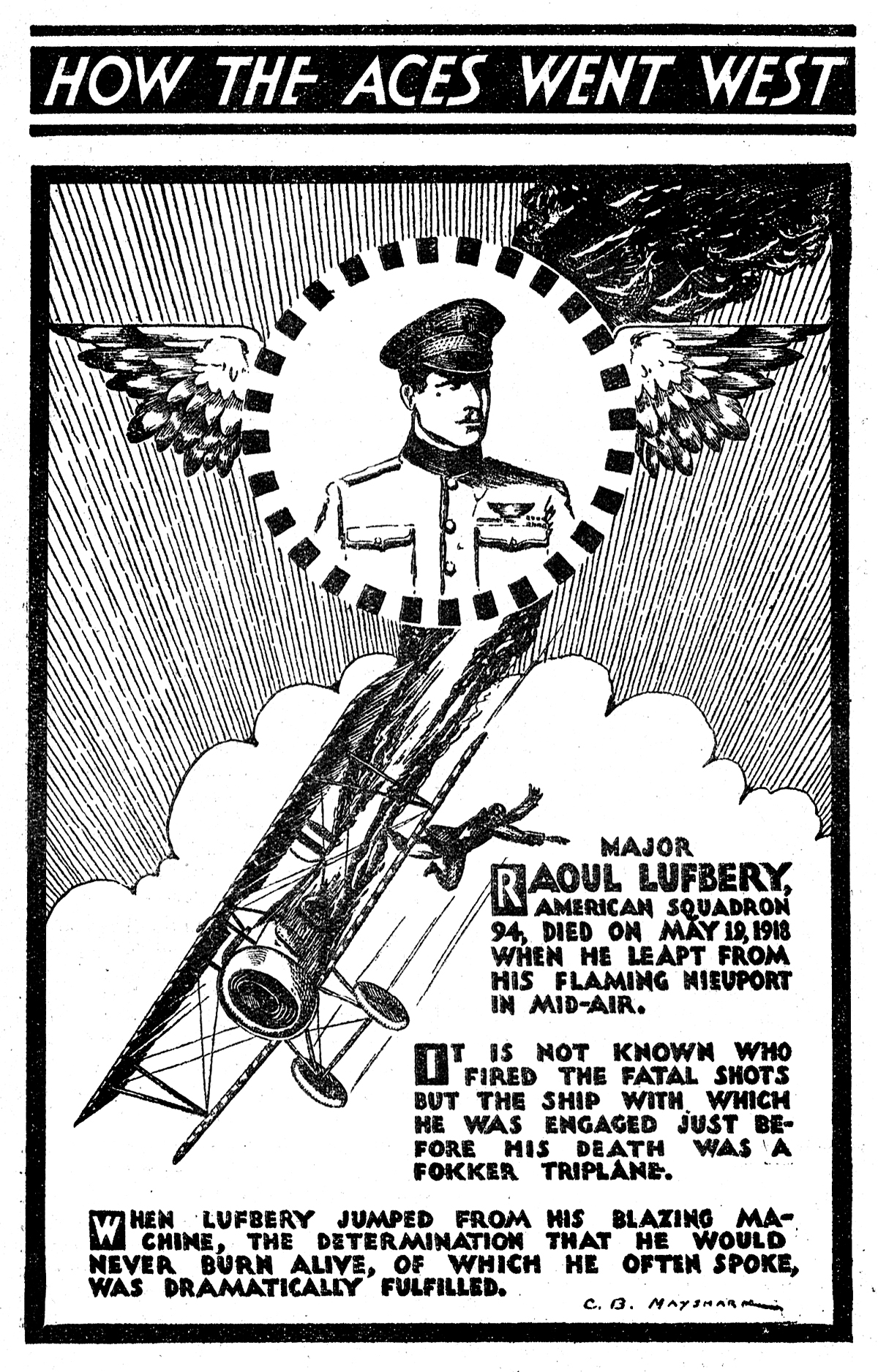
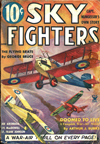
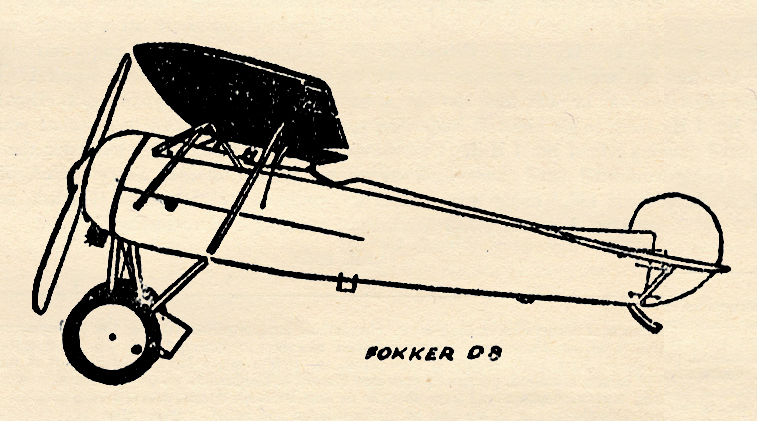
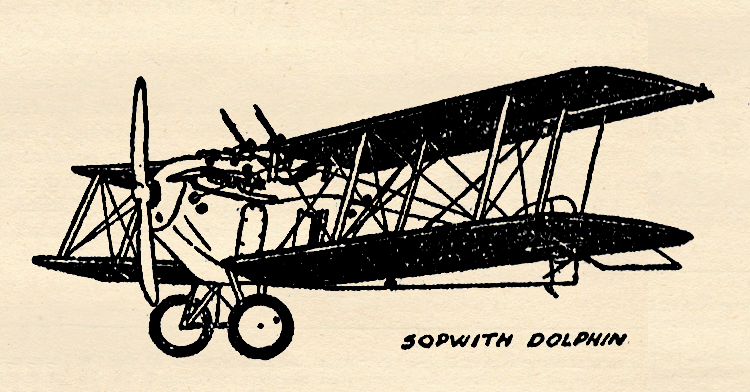

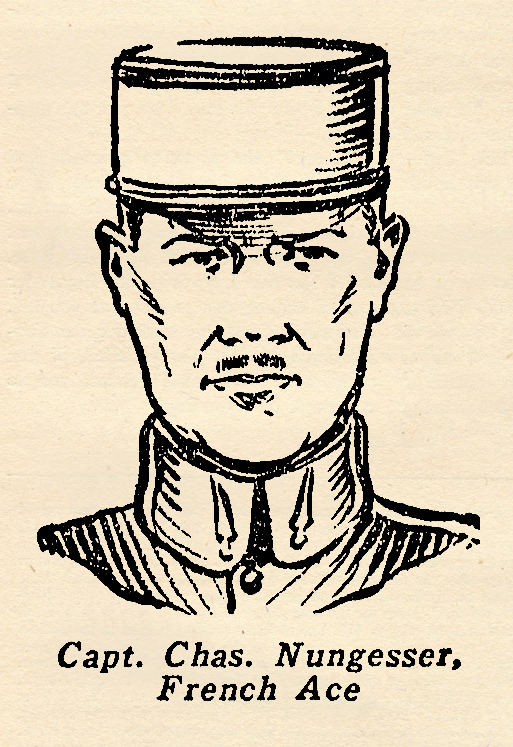 none is more poignantly remembered than Charles Nungesser, who began his flaming war career as a Lieutenant of Hussars and was one of that famous lighting band of cavalrymen that stopped the German Uhlans at the gates of Paris. For his exploits in this heroic stand he was awarded the Medal Militaire, the highest combat award.
none is more poignantly remembered than Charles Nungesser, who began his flaming war career as a Lieutenant of Hussars and was one of that famous lighting band of cavalrymen that stopped the German Uhlans at the gates of Paris. For his exploits in this heroic stand he was awarded the Medal Militaire, the highest combat award.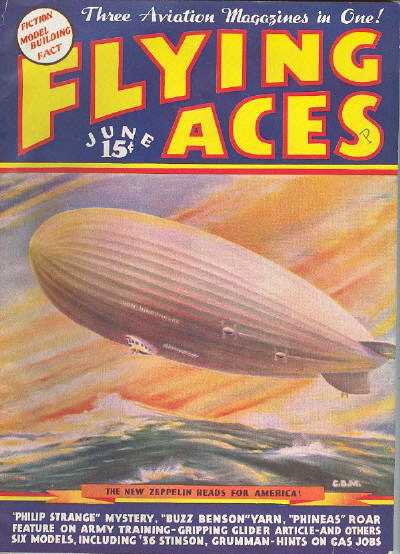 You heard right! That marvel from Boonetown, Iowa is back and this time Phineas goes in for hypnotism!
You heard right! That marvel from Boonetown, Iowa is back and this time Phineas goes in for hypnotism!